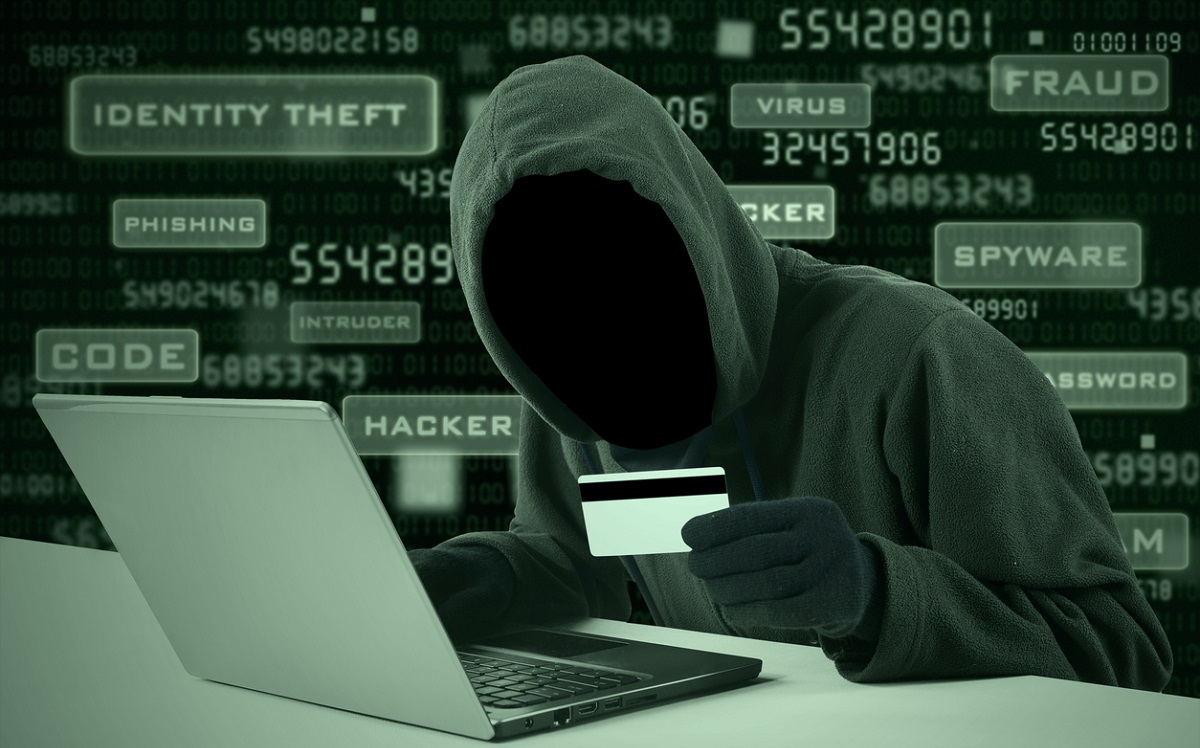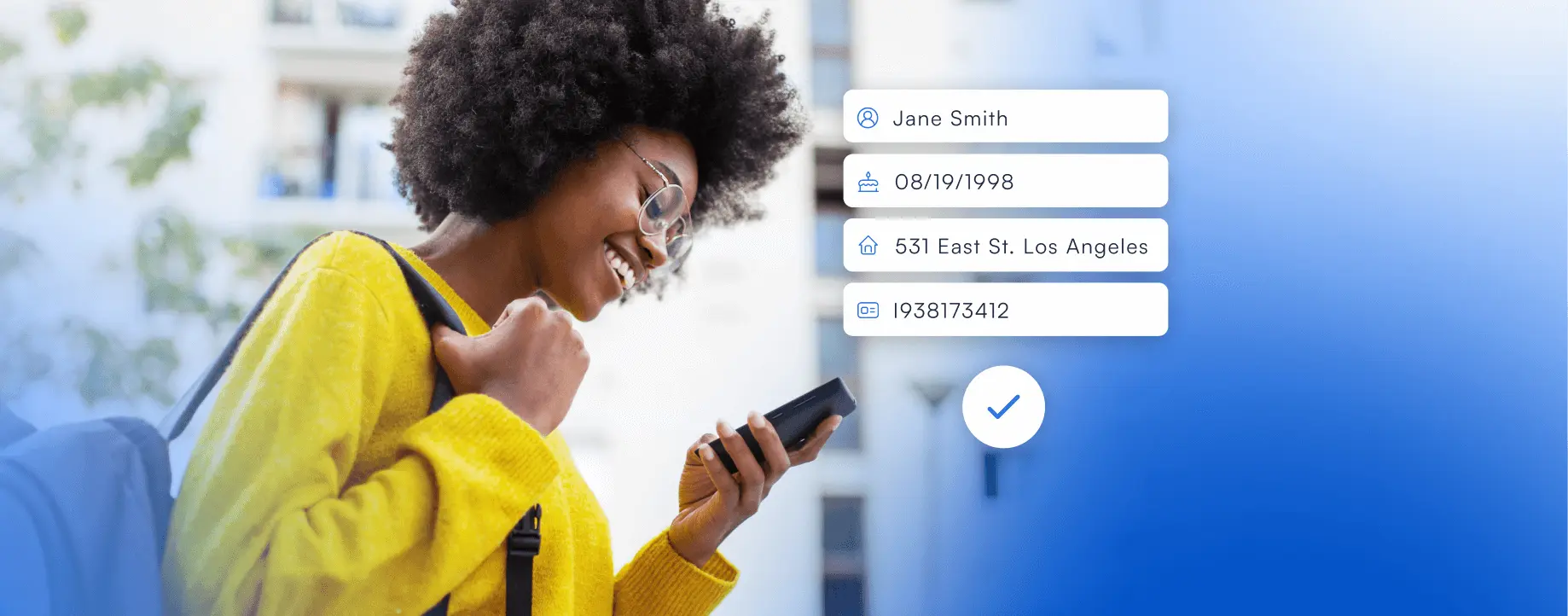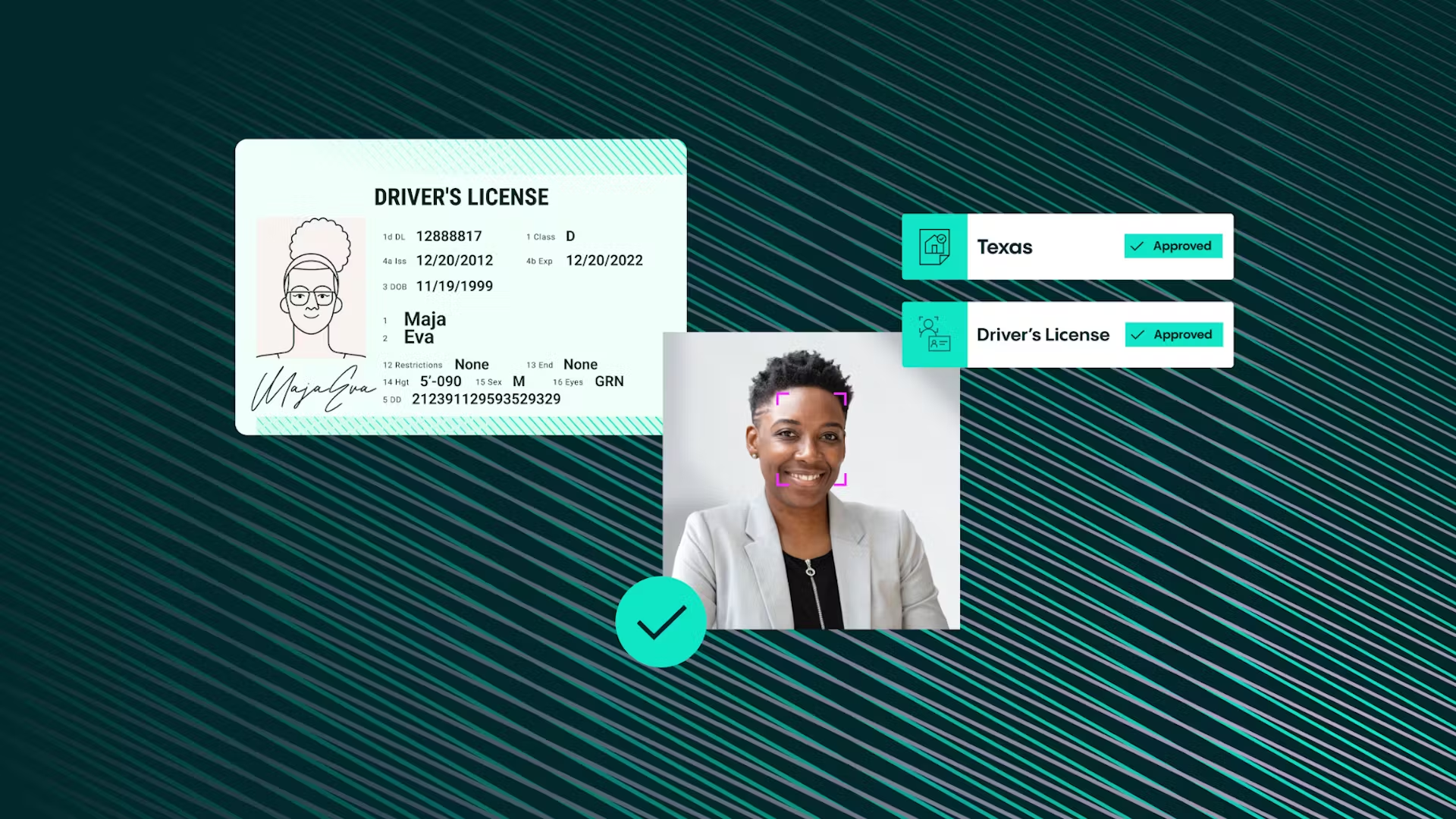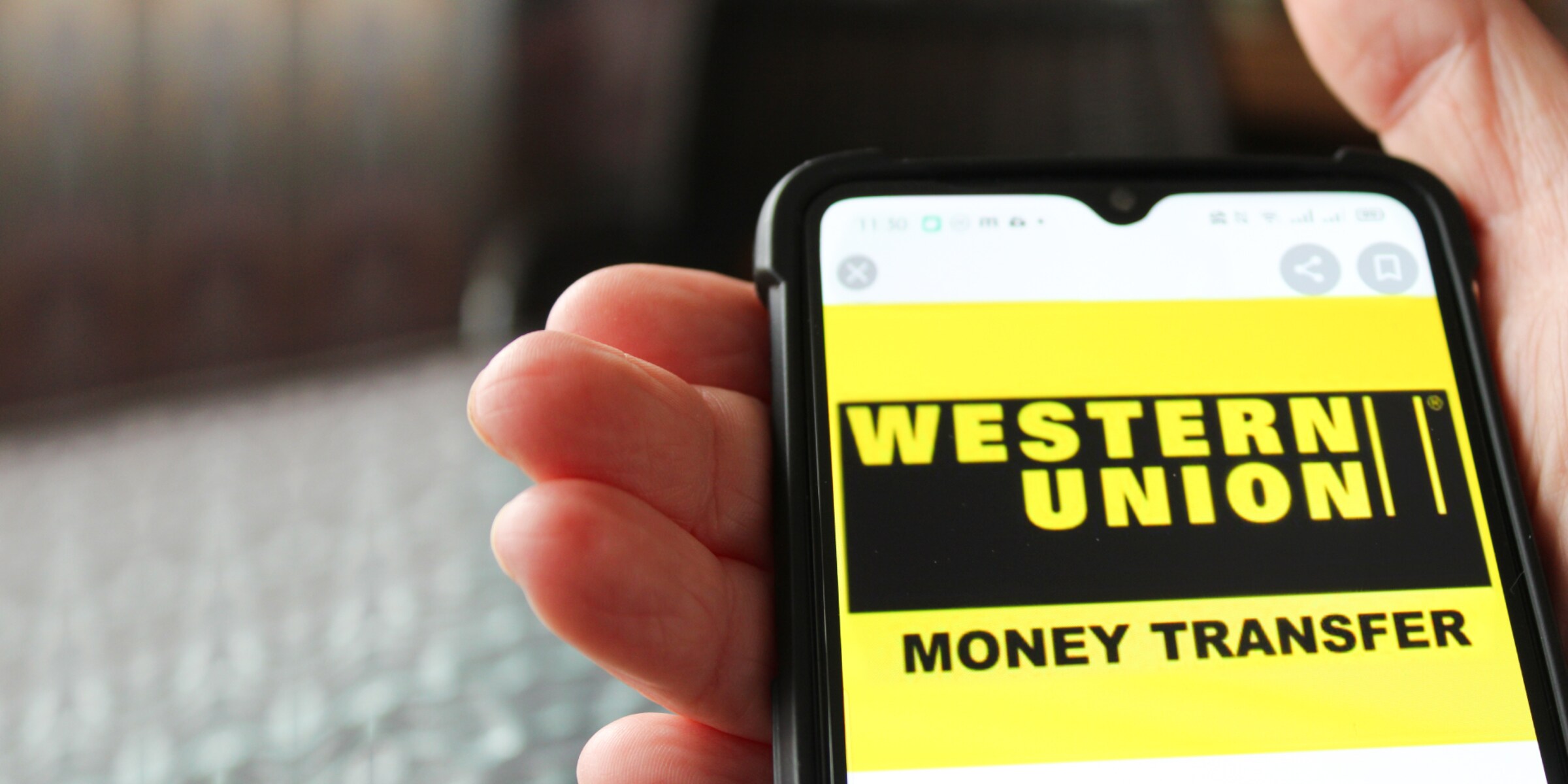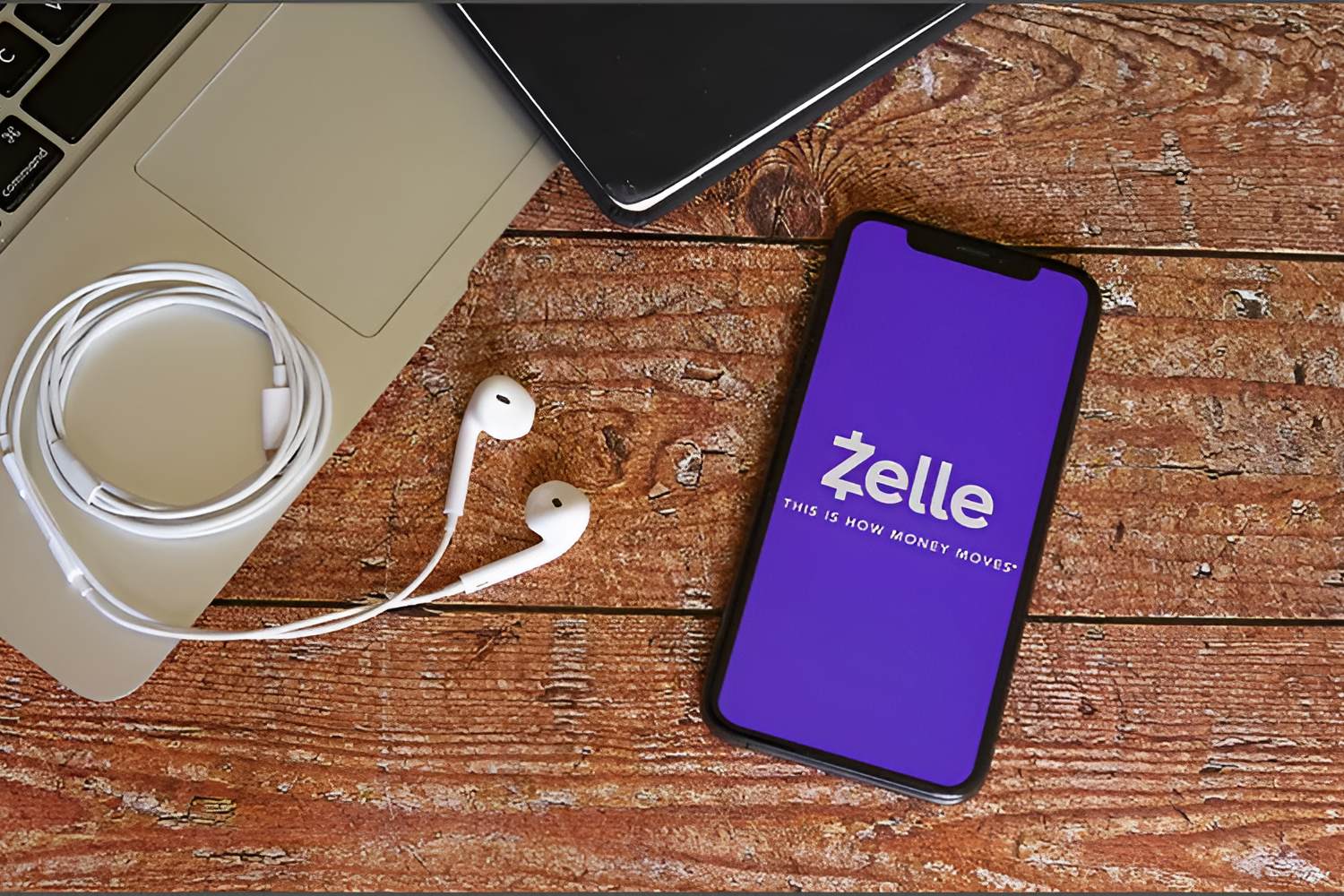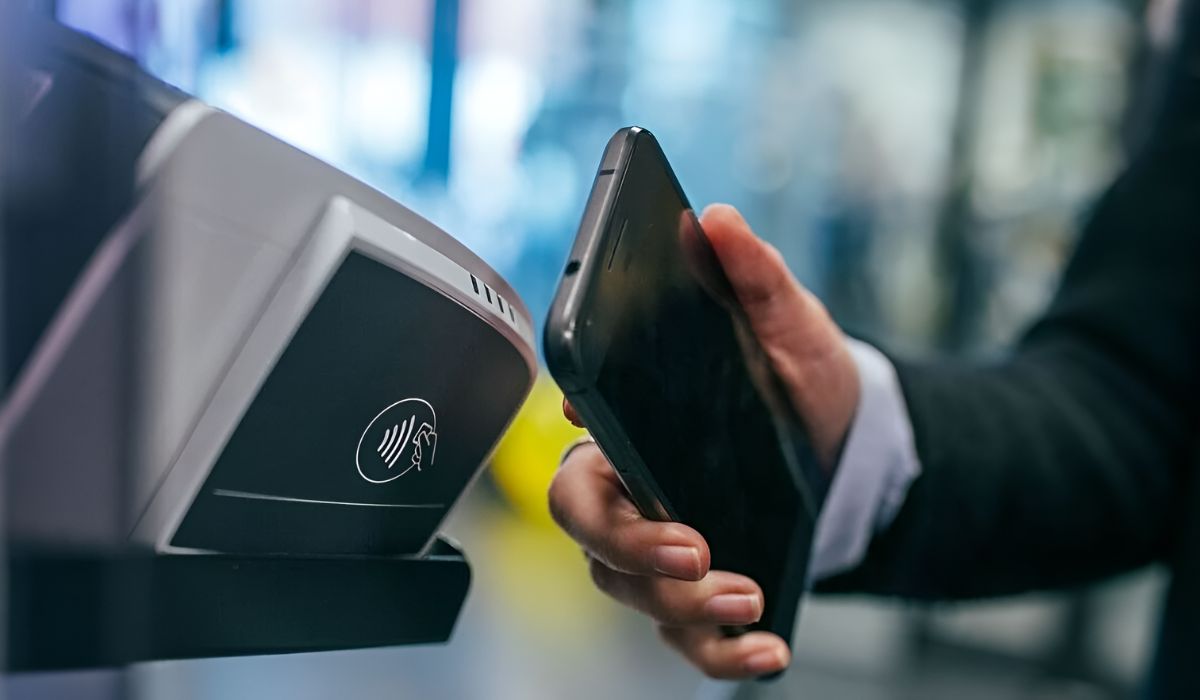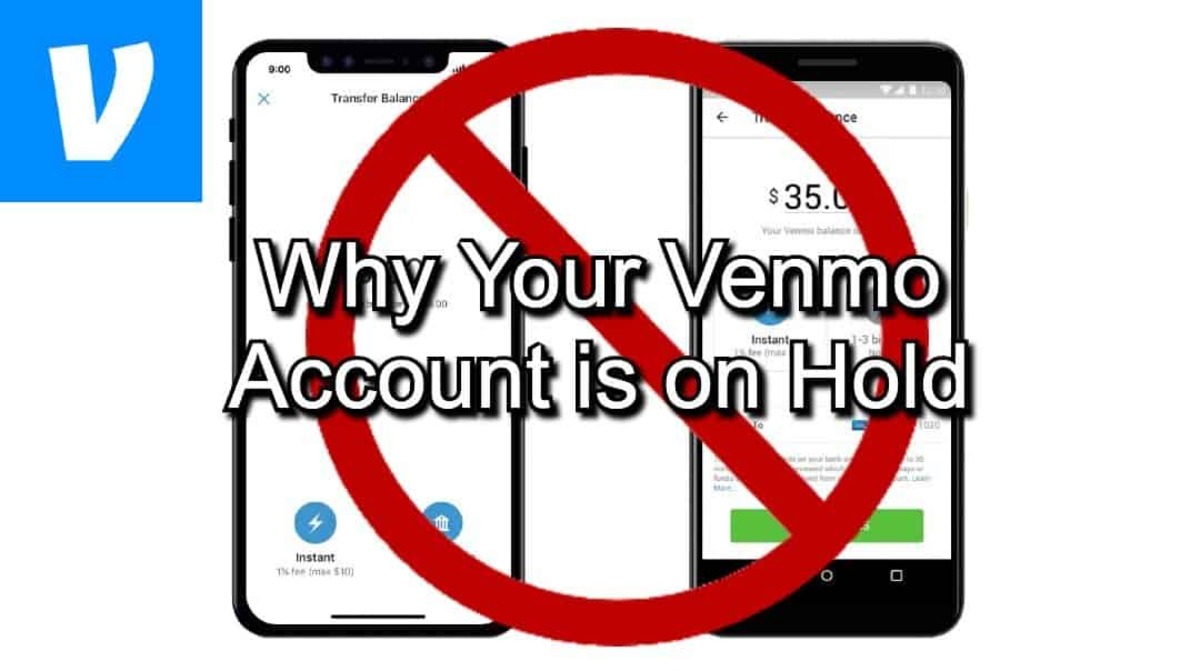Introduction
Welcome to the world of banking—where individuals and businesses entrust their hard-earned money, savings, and investments. However, with the convenience of online banking and digital transactions comes the increased risk of fraud. Fraud in the banking industry has become a growing concern, affecting millions of people around the world. From identity theft to phishing scams, fraudsters are constantly devising new ways to exploit unsuspecting individuals and compromise their financial security.
Understanding the various types of banking fraud and the signs to look out for is crucial in ensuring the safety of your financial assets. By being proactive and adopting preventive measures, you can minimize the risk of falling victim to fraud and protect your banking transactions.
This article aims to educate you about the different types of banking fraud, highlight common warning signs, and provide practical tips on how to prevent becoming a victim. By implementing these preventive measures and staying vigilant, you can safeguard your finances and enjoy the convenience and benefits of modern banking without the fear of falling into the hands of fraudsters.
Understanding Fraud in Banking
Banking fraud refers to any illegal activity carried out to obtain someone else’s financial information or gain unauthorized access to their accounts, with the intent to deceive and steal money. Fraudsters target individuals and businesses through various channels, including online banking platforms, credit cards, and phishing scams. Understanding the different types of banking fraud can help you recognize potential risks and take appropriate precautions.
One common type of banking fraud is identity theft, where fraudsters steal personal information, such as social security numbers, dates of birth, and login credentials, to impersonate victims and gain access to their accounts or make fraudulent transactions. Another type is credit card fraud, where perpetrators use stolen card information to make unauthorized purchases or withdraw cash.
Phishing scams are also prevalent in banking fraud, involving fraudsters disguising themselves as legitimate institutions or individuals to trick victims into sharing sensitive information. This can be done through emails, phone calls, or fake websites designed to look like official banking portals. Additionally, there are scams targeting businesses, such as invoice fraud and CEO impersonation scams, where fraudsters manipulate employees into making unauthorized payments.
Understanding the tactics and techniques employed by fraudsters is the first step toward preventing banking fraud. By staying informed about the latest fraud trends and being aware of common signs of fraudulent activity, you can protect yourself and your finances from potential threats.
Types of Banking Fraud
There are several types of banking fraud that individuals and businesses should be aware of in order to protect themselves from financial losses and identity theft.
- Identity Theft: This occurs when a fraudster steals personal information, such as social security numbers and login credentials, to impersonate the victim and gain unauthorized access to their accounts.
- Credit Card Fraud: Fraudsters obtain credit card details through various means and use them to make unauthorized purchases or cash withdrawals without the cardholder’s knowledge or consent.
- Phishing Scams: These scams involve fraudsters posing as legitimate institutions or individuals to trick victims into providing their personal and financial information. This can be done through emails, phone calls, or fake websites.
- Business Fraud: Fraudsters target businesses through various scams, such as invoice fraud and CEO impersonation scams. They manipulate employees into making unauthorized payments or sharing confidential information.
- ATM Skimming: Skimmers are devices attached to ATMs to capture card information. Fraudsters then use the stolen data to create cloned cards and make fraudulent transactions.
- Mobile Banking Fraud: With the rise of mobile banking, fraudsters have adapted by creating fake banking apps or sending malicious links to steal login credentials and access sensitive financial information.
- Check Fraud: In this type of fraud, criminals alter or forge checks to divert funds into their own accounts or obtain cash illegally.
- Investment Scams: Fraudulent investment schemes promise high returns with little risk. Individuals are encouraged to invest in fake companies or fraudulent opportunities, resulting in financial losses.
Being familiar with these types of banking fraud can help you recognize potential threats and take appropriate measures to safeguard your financial information and assets.
Common Signs of Banking Fraud
Recognizing the signs of banking fraud is crucial in identifying and preventing potential scams. By being vigilant and aware of common red flags, you can protect your financial accounts and personal information from falling into the wrong hands. Here are some common signs to watch out for:
- Unauthorized Transactions: Keep an eye on your account statements and regularly review your transactions. If you notice any unfamiliar or unauthorized charges or withdrawals, it could be a sign of fraud.
- Unusual Account Activity: Be wary of sudden changes in your account, such as new beneficiaries, address changes, or account closures, that you didn’t initiate. These changes could indicate that someone has gained unauthorized access.
- Unexpected Notifications: If you receive unexpected emails, text messages, or phone calls asking for personal or financial information, be cautious. Legitimate financial institutions usually do not request sensitive information through such channels.
- Inconsistent Communications: Pay attention to the quality of communication you receive from your bank or financial institution. Poor grammar, spelling errors, and unprofessional formatting could be indicators of a fraudulent message.
- Requests for Personal Information: Be cautious when asked to provide personal or financial information, especially if it is unsolicited. Fraudsters may attempt to trick you into revealing sensitive details through phishing scams or social engineering tactics.
- Unexpected Pop-ups or Redirects: If you encounter unexpected pop-up windows or are redirected to unfamiliar websites during online banking transactions, it could be a sign of a phishing attempt. Legitimate banking portals typically do not have such behavior.
- Unsecure Websites: Always ensure that the websites you visit for online banking are secure. Look for HTTPS in the website URL and a lock icon in the browser address bar. Avoid entering sensitive information on unsecured websites.
- Suspicious Emails or Links: Be cautious of emails containing suspicious attachments or links. Hover over links to check the actual URL and avoid clicking on any suspicious or unfamiliar links.
These common signs of banking fraud should raise alarm bells and prompt you to take immediate action to protect your accounts and personal information. If you encounter any suspicious activity, contact your bank or financial institution immediately.
Tips to Prevent Banking Fraud
Preventing banking fraud requires a proactive approach and the implementation of best practices to safeguard your financial accounts and personal information. By following these tips, you can minimize the risk of falling victim to fraud:
- Strong Passwords: Create strong, unique passwords for your banking accounts. Use a combination of letters, numbers, and special characters. Avoid using easily guessable information, such as your name or birthdate.
- Two-Factor Authentication (2FA): Enable two-factor authentication whenever possible. This adds an extra layer of security by requiring a verification code in addition to your password for account access.
- Keep Software Updated: Regularly update your computer, smartphone, and banking apps with the latest security patches and software updates. These updates often include essential security enhancements.
- Be Cautious with Public Wi-Fi: Avoid accessing your banking accounts or conducting financial transactions on public or unsecured Wi-Fi networks. Use secure, password-protected networks or a VPN to encrypt your internet connection.
- Secure Banking Apps: Install mobile banking apps from trusted sources, such as official app stores. Avoid clicking on links or downloading apps from suspicious sources, as they may be malicious.
- Secure Your Devices: Set up PINs or biometric locks on your mobile devices to prevent unauthorized access. Ensure that your devices are protected by reputable antivirus and anti-malware software.
- Regularly Monitor Accounts: Keep a close eye on your bank statements and transaction history. Report any suspicious or unauthorized activity to your bank immediately.
- Protect Personal Information: Avoid sharing your personal or financial information with unknown individuals or organizations. Be cautious of providing sensitive details through phone calls or emails, even if the requester appears legitimate.
- Use Verified Websites: Only use verified and secure websites for online banking transactions. Look for the padlock icon in the browser address bar and ensure that the URL starts with “https://”.
- Educate Yourself: Stay informed about the latest banking fraud trends and scams. Regularly educate yourself about the new techniques fraudsters use, so you can better identify and avoid potential threats.
By following these preventive measures, you can significantly reduce the risk of falling victim to banking fraud and keep your financial accounts and personal information safe and secure.
Password and Account Security
Securing your passwords and accounts is crucial in protecting your financial information and preventing unauthorized access. Here are some key practices to follow:
- Create Strong Passwords: Use complex passwords that include a combination of upper and lowercase letters, numbers, and special characters. Avoid using obvious choices like your name or birthdate.
- Unique Passwords: Use a different password for each of your online accounts. This way, if one account is compromised, the others will remain secure.
- Change Passwords Regularly: Periodically update your passwords, ideally every three to six months. This helps to maintain the security of your accounts and reduces the risk of unauthorized access.
- Enable Multi-Factor Authentication (MFA): Utilize the additional layer of protection offered by MFA. This typically involves entering a verification code sent to your phone or email after entering your password.
- Avoid Sharing Credentials: Do not share your passwords, PINs, or username with anyone, including friends, family, or suspicious third parties. Your banking credentials should remain confidential.
- Be Wary of Phishing Attacks: Protect yourself from phishing scams by being cautious of emails, texts, or calls requesting your login credentials. Verify the legitimacy of the communication with your bank before providing any information.
- Keep Software Updated: Regularly update your devices, operating systems, and banking apps. These updates often include security patches that protect against vulnerabilities.
- Secure Your Devices: Set up strong passcodes or biometric locks, such as PINs or fingerprint scans, on your mobile devices. This adds an extra layer of security in case your device is lost or stolen.
- Use Secure Networks: Avoid accessing your accounts on public Wi-Fi networks, as they pose security risks. Use secure, password-protected networks or a virtual private network (VPN) to encrypt your connection.
- Beware of Malicious Software: Install reputable antivirus and anti-malware software on all your devices. Regularly scan for malware and take immediate action if any suspicious activity is detected.
By implementing these password and account security measures, you can significantly enhance the protection of your financial information and reduce the risk of unauthorized access to your accounts.
Monitor Your Accounts Regularly
Regularly monitoring your bank accounts is essential for detecting any suspicious activity and ensuring the security of your finances. Here are some important tips for effective account monitoring:
- Review Bank Statements: Carefully review your bank statements as soon as they become available. Look for any unfamiliar transactions or charges that you do not recognize.
- Check Transaction History: Log in to your online banking accounts regularly to check your transaction history. Look for any unauthorized transactions or suspicious activity that may signal fraudulent behavior.
- Set Up Account Alerts: Take advantage of the account alerts provided by your bank. These alerts can notify you of any unusual activity, such as large withdrawals, changes to your account information, or failed login attempts.
- Monitor Credit Reports: Regularly review your credit reports for any unauthorized accounts or inquiries. Reporting any discrepancies immediately can help prevent further fraud and identity theft.
- Be Alert to Small Transactions: Fraudsters often test stolen information by making small transactions before attempting larger ones. Be vigilant in spotting any unexpected or unfamiliar small transactions on your account statements.
- Keep Contact Information Updated: Ensure that your bank has your current contact information, including mobile phone numbers and email addresses. This will ensure that you receive important notifications about your account activity promptly.
- Use Banking Apps: Many banks offer mobile apps that allow you to monitor your accounts on the go. Take advantage of these apps to easily track your transactions and monitor your account activity from anywhere.
- Report Suspicious Activity: If you notice any suspicious transactions or activity on your account, contact your bank immediately. They can help investigate and take appropriate actions to secure your account and prevent further fraudulent activity.
- Be Proactive: Regularly monitoring your accounts is an ongoing process. Stay vigilant and make it a habit to regularly review your transactions, statements, and account activity to maintain the security of your finances.
By monitoring your accounts regularly and promptly reporting any unusual activity, you can protect yourself from potential fraud and take immediate action to mitigate any potential losses.
Be Cautious with Phishing Scams
Phishing scams are a common tactic used by fraudsters to trick individuals into revealing their personal and financial information. These scams often involve fraudulent emails, texts, or phone calls that appear to be from legitimate organizations, such as banks or government agencies. To protect yourself from phishing scams, it’s essential to stay vigilant and follow these precautions:
- Verify the Source: Be cautious of unsolicited communications asking for personal information or urgent action. Verify the legitimacy of the message by independently contacting the organization through their official website or phone number.
- Double-Check URLs: Carefully examine the URL of any website you visit, especially if it involves financial transactions. Fraudulent websites may appear similar to legitimate ones but have slight variations or misspellings.
- Avoid Clicking Suspicious Links: Do not click on links in emails or messages from unknown senders or those that seem suspicious. Hover over the link to see its actual destination before clicking, or manually type in the website address directly in your browser.
- Be Wary of Urgent Requests: Phishing scams often create a sense of urgency, claiming that immediate action is required to avoid negative consequences. Be skeptical of such messages and take the time to investigate their validity before responding.
- Never Share Sensitive Information: Legitimate organizations will never ask you to provide sensitive information via email or unsolicited phone calls. Avoid sharing personal or financial details, such as Social Security numbers or banking credentials, through these channels.
- Keep Anti-Phishing Software Updated: Install and regularly update reputable anti-phishing software on your devices. These tools can help identify and block fraudulent websites or malicious links.
- Report Phishing Attempts: If you receive a phishing email or suspect a phishing attempt, report it to your bank or the organization being impersonated. Reporting these scams can help protect others from falling victim to the same scheme.
- Educate Yourself: Stay informed about the latest phishing techniques and scams. Read up on news articles or official resources that highlight common phishing tactics and warning signs. This knowledge can help you identify and avoid potential phishing attacks.
- Train Employees: If you own or manage a business, educate your employees about phishing scams and provide training on how to recognize and avoid them. This can help protect your organization’s sensitive information and financial assets.
By being cautious and staying informed about phishing scams, you can protect yourself from falling prey to these fraudulent attempts and keep your personal and financial information secure.
Safeguard Your Personal Information
Protecting your personal information is crucial in preventing identity theft and financial fraud. Here are some important practices to help you safeguard your sensitive data:
- Be Mindful of Sharing Information: Avoid unnecessarily sharing personal information, such as your Social Security number, birthdate, or home address, unless it is necessary and with trusted entities.
- Use Secure Websites: When providing personal information online, ensure that the website you are using is secure. Look for “https” in the URL and a padlock symbol indicating encryption.
- Be Wary of Impersonators: Beware of individuals or organizations that pose as trusted entities to trick you into sharing personal information. Verify the legitimacy of the request before providing any sensitive data.
- Secure Physical Documents: Safely store physical documents that contain sensitive information, such as bank statements, tax documents, and identification papers. Consider locking them in a secure cabinet or using a safe deposit box.
- Protect Digital Files: Use strong passwords and encryption to secure your digital files. Regularly backup important data and store it in a secure, password-protected location or cloud storage service.
- Be Cautious on Social Media: Be mindful of the information you share on social media platforms. Avoid posting personal details that could potentially be used by fraudsters to access your accounts or impersonate you.
- Use Privacy Settings: Regularly review and adjust the privacy settings on your social media accounts to control who can see your personal information and limit access to your posts and profile.
- Be Alert to Impersonation Scams: Fraudsters may impersonate government officials, bank representatives, or tech support personnel to gather personal information. Verify their identity independently before sharing any information.
- Shred Documents: Before discarding documents that contain personal information, such as bank statements or credit card statements, shred them to prevent identity theft through dumpster diving.
- Monitor Credit Reports: Regularly check your credit reports from the major credit bureaus. Look for any unauthorized accounts or suspicious activity and report any discrepancies immediately.
By diligently safeguarding your personal information, you can reduce the risk of identity theft and protect yourself from financial fraud.
Use Secure Networks and Devices
Ensuring the security of your networks and devices is vital in protecting your personal and financial information from unauthorized access. By following these best practices, you can enhance your digital security:
- Secure Wi-Fi Networks: Use secure, password-protected Wi-Fi networks when accessing the internet, especially for sensitive activities like online banking. Avoid using public or unsecured networks, as they can be vulnerable to hacking.
- Update Devices: Regularly update your devices, including computers, smartphones, and tablets, with the latest security patches and firmware updates. These updates often include essential fixes for vulnerabilities.
- Install Antivirus Software: Protect your devices by installing reputable antivirus software and keeping it up to date. Antivirus programs can help detect and remove malware or malicious software that may compromise your security.
- Use Firewalls: Enable firewalls on your devices to provide an additional layer of protection against unauthorized access. Firewalls monitor incoming and outgoing network traffic, blocking potential threats.
- Enable Device Locks: Set up PINs, passcodes, or biometric authentication (such as fingerprint or facial recognition) to prevent unauthorized access to your devices. Enable automatic locking when the device is idle.
- Encrypt Data: Encrypt sensitive data on your devices to protect it from unauthorized access in case of theft or loss. Many devices and operating systems offer built-in encryption features that you can enable.
- Use Virtual Private Networks (VPNs): When accessing the internet, especially on public networks, use VPNs to encrypt your internet traffic and protect your personal information from potential eavesdropping.
- Be Cautious of Downloads: Avoid downloading unfamiliar or suspicious files or opening email attachments from unknown sources. Malicious downloads or attachments can contain malware that compromises your device’s security.
- Enable Remote Wiping: Set up remote wiping capabilities on your devices. This feature allows you to erase all data on a stolen or lost device to prevent unauthorized access to your personal information.
- Secure Device Disposal: When disposing of your old devices, ensure that all personal data is completely erased. Factory reset your devices to remove all stored information or physically destroy the storage media.
By implementing these measures to use secure networks and devices, you can mitigate the risk of unauthorized access to your personal and financial information and protect your digital security.
Protect Your Debit/Credit Cards
Debit and credit cards are valuable financial tools that require careful protection to prevent unauthorized use and fraudulent activity. Here are some important steps to safeguard your cards:
- Sign Cards Immediately: As soon as you receive a new debit or credit card, sign the back to prevent anyone else from easily using it if it gets lost or stolen.
- Keep Cards Secure: Store your cards in a safe and secure location. Avoid leaving them unattended or visible in public places, as it could make you a target for theft.
- Memorize PINs: Avoid writing down your Personal Identification Numbers (PINs) for your debit cards. Memorize them instead and avoid using easily guessable combinations like birthdays or sequential numbers.
- Use Secure ATMs: When using ATMs, choose those located in well-lit and secure areas. Avoid suspicious-looking or unaffiliated ATMs, as they may have card skimming devices attached.
- Monitor Transactions: Regularly review your debit and credit card transactions online or through banking apps. Report any unauthorized charges or suspicious activity to your card issuer immediately.
- Enable Transaction Notifications: Set up transaction alerts through your card issuer or banking app. This way, you’ll receive notifications for any activity on your cards, helping you catch and report any unauthorized transactions quickly.
- Use Secure Online Shopping: When making online purchases, ensure that you are on a secure and reputable website. Look for the lock icon and “https” in the URL to indicate a secure connection.
- Be Wary of Card Skimming: Protect your card information from skimming devices by checking for any suspicious attachments or loose card readers at ATMs or point-of-sale terminals. If something seems unusual, use a different machine or report it to the appropriate authorities.
- Notify Card Issuers: Inform your debit and credit card issuers immediately if your cards are lost or stolen. They can deactivate the cards and issue replacements to prevent unauthorized use.
- Shred Receipts: Shred or securely dispose of receipts and billing statements that contain your card information. This prevents others from obtaining your card details through dumpster diving.
- Be Cautious of Phone Calls: Be wary of unsolicited phone calls claiming to be from your card issuer. Avoid providing any personal or card information over the phone unless you initiated the call and are certain of the caller’s identity.
By following these practices to protect your debit and credit cards, you can reduce the risk of card fraud and unauthorized use, ensuring the security of your financial transactions.
Stay Informed about the Latest Frauds
Staying informed about the latest frauds and scams is essential in protecting yourself from becoming a victim of financial fraud. Fraudsters are constantly evolving their tactics, so it’s important to stay one step ahead. Here are some ways to keep yourself informed:
- Follow News and Updates: Stay updated on news and reports related to financial fraud. Keep an eye on reputable sources that highlight the latest scams and tactics used by fraudsters.
- Subscribe to Alerts: Sign up for email or text alerts from your bank or financial institution. They often send out alerts about new fraud trends, security updates, and measures you can take to protect yourself.
- Join Community Groups: Join online communities or forums related to financial security and fraud prevention. Engaging in discussions can help you learn from others’ experiences and stay updated on emerging fraud schemes.
- Participate in Webinars and Workshops: Look for financial education webinars or workshops offered by banks or local organizations. These events often cover topics related to fraud prevention and provide valuable insights and tips.
- Follow Official Social Media Channels: Follow your bank’s official social media accounts or subscribe to their blogs. They often share informative articles and updates on fraud prevention measures.
- Read Industry Publications: Stay updated by reading industry publications, magazines, or newsletters that cover banking, finance, and cybersecurity. These publications often provide insights into the latest fraud trends and prevention strategies.
- Stay Alert to Scam Alerts: Be aware of scam alerts issued by government agencies, consumer protection organizations, or law enforcement agencies. These alerts can provide important information about new scams and ways to protect yourself.
- Educate Yourself Regularly: Continuously educate yourself on different types of fraud, such as phishing, identity theft, and investment scams. Understand the techniques used by fraudsters and how to recognize and avoid falling into their traps.
- Learn about Technology Trends: Stay informed about emerging technologies and their impact on banking and financial security. This knowledge can help you better identify potential vulnerabilities and take appropriate precautions.
- Attend Fraud Prevention Seminars: Attend webinars or seminars focused on fraud prevention and financial security. Financial institutions and local organizations often conduct these events to educate the public on the latest fraud prevention strategies.
By staying well-informed about the latest frauds and scams, you can adapt your security measures and protect yourself from evolving threats. Being aware of common scams and staying vigilant is your best defense against financial fraud.
Conclusion
Banking fraud is a persistent threat in today’s digital world, but by taking proactive measures and staying informed, you can significantly reduce the risk of becoming a victim. Understanding the different types of banking fraud, recognizing common warning signs, and implementing preventive measures are crucial for safeguarding your financial assets and personal information.
By following best practices such as maintaining strong passwords, regularly monitoring your accounts, being cautious with phishing scams, and protecting your debit/credit cards, you can create layers of defense against fraudsters. Additionally, staying informed about the latest frauds and scams allows you to adapt your security measures and stay ahead of evolving threats.
Remember, prevention is key. Take the necessary steps to secure your online transactions, protect your personal information, and stay vigilant. By implementing these measures, you can enjoy the convenience of modern banking while keeping your finances safe and secure.
Keep in mind that financial institutions play a crucial role in combating fraud. If you suspect any fraudulent activity, promptly report it to your bank or financial institution. They have the resources and expertise to investigate and take appropriate actions to protect your accounts and minimize the impact of fraud.
By maintaining a proactive mindset, staying educated, and implementing preventive measures, you can protect yourself and your financial well-being from the ever-present threat of banking fraud.







